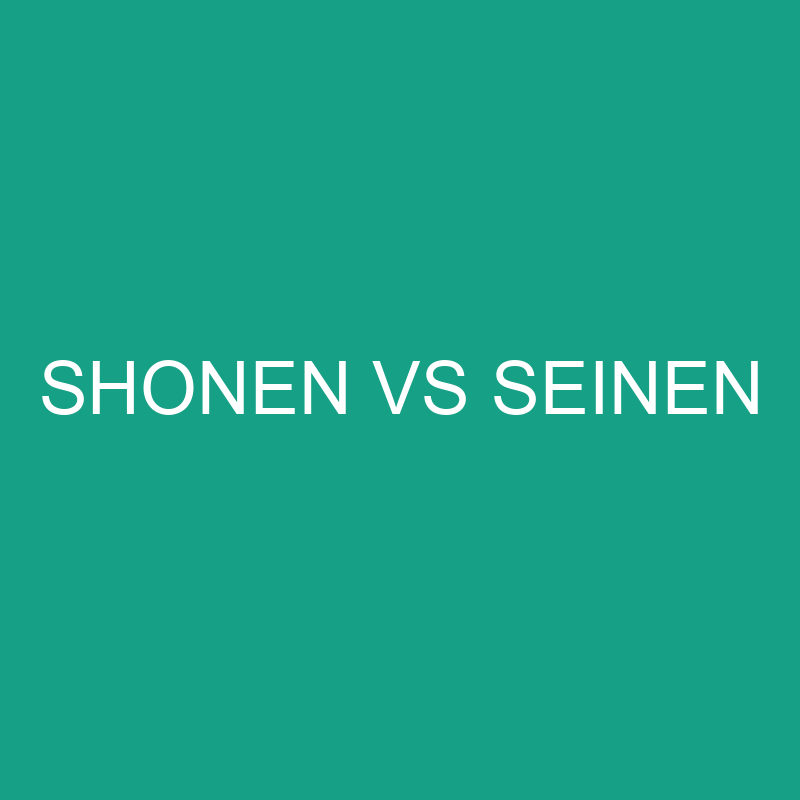Shonen vs Seinen: Deciphering the World of Manga and Anime
In the vast and diverse world of manga and anime, the terms “Shonen” and “Seinen” play a crucial role in categorizing works based on their target demographics. These classifications go beyond age groups, encompassing specific themes, styles, and narrative approaches. Let’s delve into the distinctions between Shonen and Seinen to understand the unique characteristics of each.
Post Contents
Shonen (少年):
- Definition:
- The term “Shonen” translates to “boy” or “youth” in Japanese.
- Target Audience:
- Primarily aimed at a young male audience, typically in the age range of 12 to 18.
- Themes:
- Action and Adventure: Shonen manga and anime often feature intense action sequences, battles, and adventurous storylines.
- Friendship and Camaraderie: Themes of friendship, teamwork, and camaraderie are prevalent.
- Coming-of-Age: Many Shonen works focus on the growth and development of the main characters as they face challenges.
- Underdog Protagonists: The main characters are often underdogs who overcome powerful adversaries.
- Examples:
- Naruto
- One Piece
- Dragon Ball
- My Hero Academia
Seinen (青年):
- Definition:
- “Seinen” translates to “youth” or “young man” in Japanese.
- Target Audience:
- Geared towards an older male audience, typically in the age range of 18 and above.
- Themes:
- Complex Narratives: Seinen works often feature more complex and mature storylines with intricate plots and character developments.
- Realism: While still within the realm of fiction, Seinen works may explore more realistic and adult themes.
- Exploration of Human Nature: Themes of psychology, morality, and the human condition are frequently explored.
- Varied Genres: Seinen covers a wide range of genres, including drama, horror, science fiction, and slice of life.
- Examples:
- Berserk
- Tokyo Ghoul
- Monster
- Ghost in the Shell
Key Differences:
- Age Group:
- Shonen: Targets a younger male audience, often teenagers.
- Seinen: Geared towards an older male audience, typically adults.
- Themes and Content:
- Shonen: Emphasizes action, adventure, and themes of friendship and growth.
- Seinen: Explores more mature and complex themes, often with a focus on psychological and philosophical elements.
- Tone:
- Shonen: Generally has an optimistic and energetic tone.
- Seinen: Can have a darker and more serious tone, addressing more nuanced and mature subjects.
- Narrative Approach:
- Shonen: Often follows a hero’s journey with clear distinctions between good and evil.
- Seinen: Embraces ambiguity, moral dilemmas, and intricate plotlines.
Crossover and Adaptations:
- While Shonen and Seinen categories help define the target audience, many works incorporate elements that appeal to both demographics.
- Adaptations of manga into anime or other media can introduce a series to a broader audience beyond its initial demographic.
Conclusion:
Understanding the distinctions between Shonen and Seinen provides insights into the thematic and narrative preferences of the target audience. While these categories serve as general guidelines, the beauty of manga and anime lies in their ability to transcend demographic labels, offering diverse and rich storytelling experiences to fans of all ages. Whether it’s the energetic adventures of Shonen or the complex narratives of Seinen, both genres contribute to the vibrant tapestry of Japanese pop culture.
